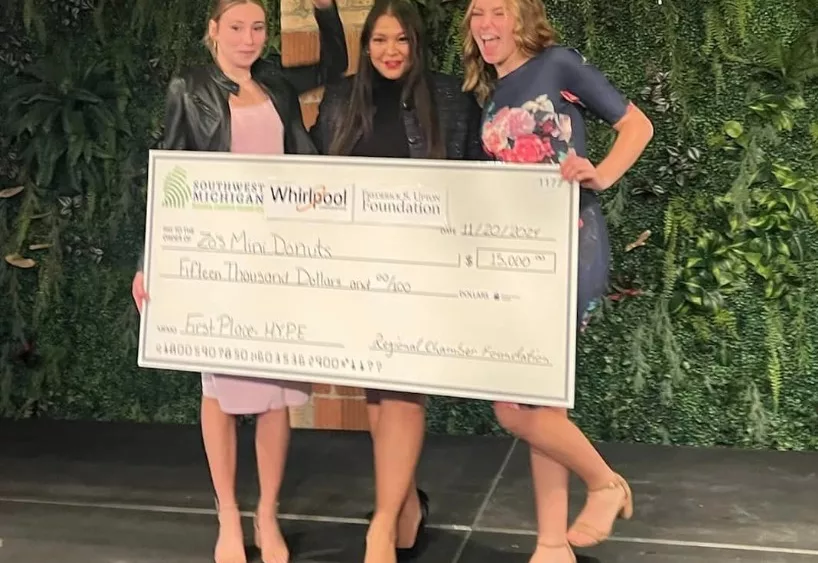Despite the ever dwindling supply of homes available on the open market in Michigan’s Great Southwest — or maybe because of the extremely tight supply, the year 2017 may be turning into a second consecutive new benchmark performance year. That’s the quick assessment of Alan Jeffries who serves as Association Executive for the Southwestern Michigan Association of Realtors.
Jeffries says, “It took ten years for the market to rebuild economically to the point where 2016 became the new peak year.” However, he points out, “For the past nine months the market has surpassed those record numbers set in 2016,” and the dwindling inventory, he says, “could help to set a new benchmark year.”
Jeffries tells us, “The inventory of houses for sale dropped 11-percent from 2,185 in September 2016 to 1,954 in September 2017. With less competition, average and median selling prices have increased, creating new record numbers, while the overall number of houses sold year-to-date had only increased by 5-percent (2,813 vs. 2,681).” Showing the extremely tight market, Jeffries tells us, “At the end of September there was a 6.3-months of supply of houses for sale. This was a slight drop from the steady level of 6.5-6.6-months supply available since May.”
The number of houses sold in September was only 4 houses higher than in September 2016 (371 vs 367), however, the average selling price of $252,111 in September 2017 was the highest for the year and for the month of September in the year-over-year comparison all the way back to 2006. It was a 22-percent increase over the $209,014 average selling price in September 2016. That comes on the heels of the average selling price in August 2017 which had actually dropped to $196,723 after four months of selling prices holding fairly steady. The spike in the September average selling price helped push the year-to-date average selling price up 7-percent ($215,154 vs. $209,014).
Additionally, the September and year-to-date median selling prices were up 11-percent. In September, the median selling price was $159,550 compared to $143,500 in September 2016. The year-to-date median selling price rose by $15,000 ($155,000 vs. $140,000).
The median price is the price at which 50% of the homes sold were above that price and 50% were below.
The surge in selling prices also boosted the total dollar volume by 22-percent in September ($93,533,403 vs. $76,708,296). Meanwhile, year-to-date, the total dollar volume jumped 13-percent from $537,080,230 in September 2016 to $605,229,929 in September 2017.
The number of bank-owned or foreclosed homes as a percentage of all transactions rose slightly to 5-percent in September from 4-percent, in July and August. The previous lowest percentage in September was 12-percent in 2014 and 2016. The highest percentage in September 2009 was 37-percent.
Locally, the mortgage rate dropped slightly to 3.938 from 3.975-percent in August. Last year in September, the rate was 3.54. Nationally, the Freddie Mac mortgage rate in September was 3.83 versus 3.82-percent in August for a 30-year conventional mortgage.
According to the National Association of Realtors, after three straight monthly declines, existing-home sales on the national front slightly reversed course in September, but ongoing supply shortages and recent hurricanes muted overall activity and caused sales to fall back on an annual basis.
Total existing-home sales, which are completed transactions that include single-family homes, townhomes, condominiums and co-ops, rose 0.7-percent to a seasonally adjusted annual rate of 5.39 million in September from 5.35 million in August. Last month’s sales pace is 1.5-percent below a year ago and is the second slowest over the past year (behind August).
Lawrence Yun serves as Chief Economist for the National Association of Realtors. He says closings mustered a meager gain in September, but declined on an annual basis for the first time in over a year (July 2016; 2.2-percent). He adds, “Home sales in recent months remain at their lowest level of the year and are unable to break through, despite considerable buyer interest in most parts of the country.” Yun suggests, “Realtors this fall continue to say the primary impediments stifling sales growth are the same as they have been all year: not enough listings – especially at the lower end of the market – and fast-rising prices that are straining the budgets of prospective buyers.”
Yun also points out, “Sales activity likely would have been somewhat stronger if not for the fact that parts of Texas and South Florida, hit by Hurricanes Harvey and Irma, saw temporary, but notable declines.”
The median existing-home price for all housing types in September was $245,100, up 4.2-percent from September 2016 ($235,200). September’s price increase marks the 67th straight month of year-over-year gains.
Regionally, existing-home sales in the Midwest sales rose 1.6-percent to an annual rate of 1.30 million in September, but are still 1.5-percent below a year ago. The median price in the Midwest was $195,800, up 5.4-percent from a year ago.
First-time buyers were 29-percent of sales in September, which is down from 31-percent in August, 34-percent a year ago and matches the lowest share since September 2015. NAR’s 2016 Profile of Home Buyers and Sellers revealed that the annual share of first-time buyers was 35-percent.
Yun tells us, “Nearly two-thirds of renters currently believe now is a good time to buy a home, but weakening affordability and few choices in their price range have made it really difficult for more aspiring first-time buyers to reach the market.”
All-cash sales were 20-percent of transactions in September, unchanged from August and down from 21-percent a year ago. Individual investors, who account for many cash sales, purchased 15-percent of homes in September (unchanged from last month and a year ago).
Nationally, the total housing inventory at the end of September rose 1.6-percent to 1.90 million existing homes available for sale, but still remains 6.4-percent lower than a year ago (2.03 million) and has fallen year-over-year for 28 consecutive months. Unsold inventory is at a 4.2-month supply at the current sales pace, which is down from 4.5 months a year ago.
The numbers reported for local sales include residential property in Berrien, Cass and the westerly 2/3 of Van Buren counties and should not be used to determine the market value of any individual property. If you want to know the market value of your property, you should contact your local Realtor.






